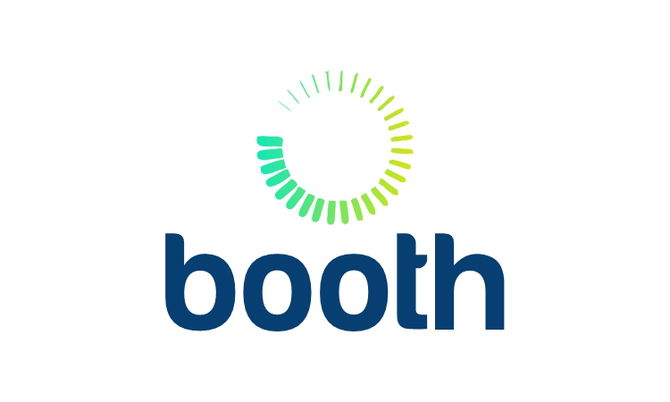
Booth.ai: Complete Buyer's Guide
AI-powered product photography solution
Booth.ai positions itself as an AI-powered product photography solution targeting e-commerce businesses and design professionals seeking to eliminate traditional photoshoot requirements. Founded in 2022, Booth.ai's core offering focuses on generating studio-quality product images without physical photoshoots, utilizing AI to create contextual backgrounds and professional lighting effects[40][52].
Market Position & Maturity
Market Standing
Booth.ai's market position faces significant uncertainty due to fundamental operational status concerns. Reports indicate the booth.ai domain became available for sale as of May 2025, directly contradicting active vendor treatment and raising serious questions about business continuity[48].
Company Maturity
Company maturity indicators present mixed signals. Founded in 2022, the vendor claims to serve 500+ companies, yet web traffic data shows only 3,652 monthly visits as of 2023, creating credibility concerns about actual market adoption and operational scale[44][58].
Growth Trajectory
Growth trajectory evidence remains unverified due to inaccessible funding and revenue documentation. The absence of disclosed funding rounds, investor information, or growth metrics limits assessment of financial stability and expansion capabilities.
Industry Recognition
Market recognition appears limited to specialized mentions in BrXnd's Marketing X AI landscape for e-commerce visuals[46].
Strategic Partnerships
The Shopify integration capability represents the primary ecosystem positioning evidence, though similar integrations exist across competitor offerings[45][53].
Longevity Assessment
Longevity assessment reveals critical risk factors. The combination of domain availability reports, unverified customer metrics, and limited market recognition creates substantial uncertainty about continued operation and business stability.
Proof of Capabilities
Customer Evidence
Customer evidence presents significant verification challenges due to operational status uncertainty and broken source citations. While content suggests predominant usage among retail and e-commerce sectors with manufacturers as secondary users[40][50], specific customer names and detailed success stories cannot be validated from accessible sources.
Market Validation
Market validation shows concerning discrepancies. The contradiction between claimed 500+ company customer base and measured 3,652 monthly website visits creates credibility questions about actual adoption scale and customer retention[44][58].
AI Technology
Booth.ai's technical foundation centers on AI-powered image generation from reference photos and text prompts, positioning itself as an alternative to traditional photography workflows[40][52].
Architecture
The platform appears designed for web-based access with Shopify compatibility, though comprehensive system requirements remain unspecified[43][56].
Primary Competitors
Primary competitive alternatives include Claid.ai, Photoroom, and Pebblely[40][46].
Competitive Advantages
The platform's Shopify integration capabilities represent a potential advantage for e-commerce-focused design professionals[45][53].
Market Positioning
Market positioning remains unclear due to product definition confusion between AI photography services and no-code platform capabilities[52][58].
Win/Loss Scenarios
Win/loss scenarios suggest Booth.ai may compete effectively for basic e-commerce photography needs with Shopify integration requirements, but faces disadvantages against specialized competitors for complex product categories or enterprise implementations requiring verified performance and operational stability[45][50][53][56].
Key Features
Pros & Cons
Use Cases
Integrations
Pricing
Featured In Articles
Comprehensive analysis of AI Product Photography Tools for AI Design for AI Design professionals. Expert evaluation of features, pricing, and implementation.
How We Researched This Guide
About This Guide: This comprehensive analysis is based on extensive competitive intelligence and real-world implementation data from leading AI vendors. StayModern updates this guide quarterly to reflect market developments and vendor performance changes.
59+ verified sources per analysis including official documentation, customer reviews, analyst reports, and industry publications.
- • Vendor documentation & whitepapers
- • Customer testimonials & case studies
- • Third-party analyst assessments
- • Industry benchmarking reports
Standardized assessment framework across 8 key dimensions for objective comparison.
- • Technology capabilities & architecture
- • Market position & customer evidence
- • Implementation experience & support
- • Pricing value & competitive position
Research is refreshed every 90 days to capture market changes and new vendor capabilities.
- • New product releases & features
- • Market positioning changes
- • Customer feedback integration
- • Competitive landscape shifts
Every claim is source-linked with direct citations to original materials for verification.
- • Clickable citation links
- • Original source attribution
- • Date stamps for currency
- • Quality score validation
Analysis follows systematic research protocols with consistent evaluation frameworks.
- • Standardized assessment criteria
- • Multi-source verification process
- • Consistent evaluation methodology
- • Quality assurance protocols
Buyer-focused analysis with transparent methodology and factual accuracy commitment.
- • Objective comparative analysis
- • Transparent research methodology
- • Factual accuracy commitment
- • Continuous quality improvement
Quality Commitment: If you find any inaccuracies in our analysis on this page, please contact us at research@staymodern.ai. We're committed to maintaining the highest standards of research integrity and will investigate and correct any issues promptly.